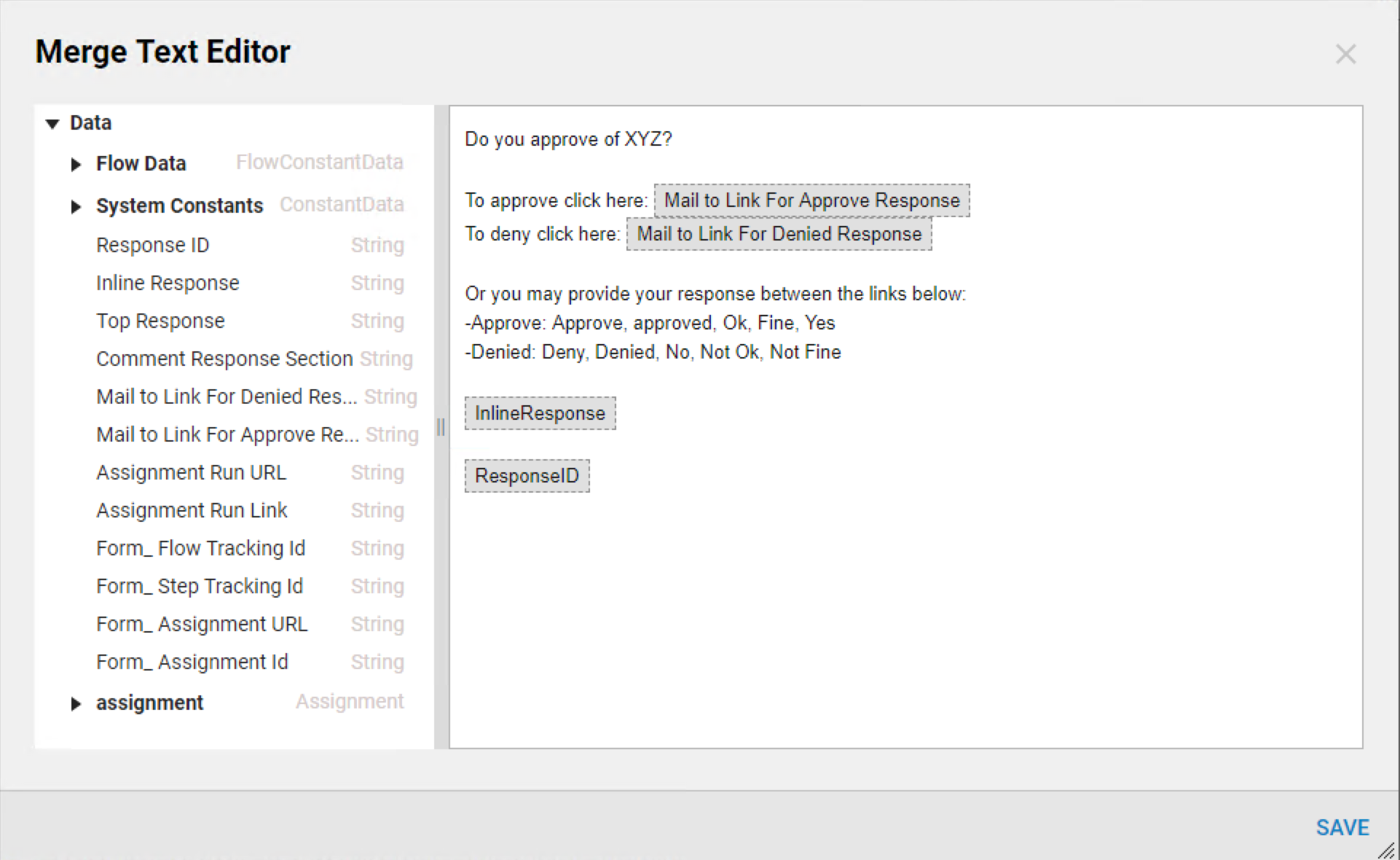Overview
Assigned Forms can process responses directly via email through:
- A user replying to an email with an answer.
- From a user clicking a link in an email.
- Offering both options.
This means that to respond, users do not need to open the assigned Form in the Portal and click a button to respond. They can reply directly via one of these two email based options, and the Form will take the path specified by the response.
Example
- Before creating the first Flow to handle responses via email, first configure an Email Response Job.For an explanation of how to set this up, please see Setting Up Email Response Job
- Now that the response job is configured, create a new Flow with an Assigned Form. A user will need to define the alternate paths that will be allowed out of this Form, since it will be handling responses outside the context of the Form. Normally responses would be handled via buttons on the Form.
- Add as many outcomes as are needed in the Action Based Outcomes section.Each path will become a link a user can provide as a possible response. Each Alternative Response defines a word or phrase that users can enter in their reply email to take this path.
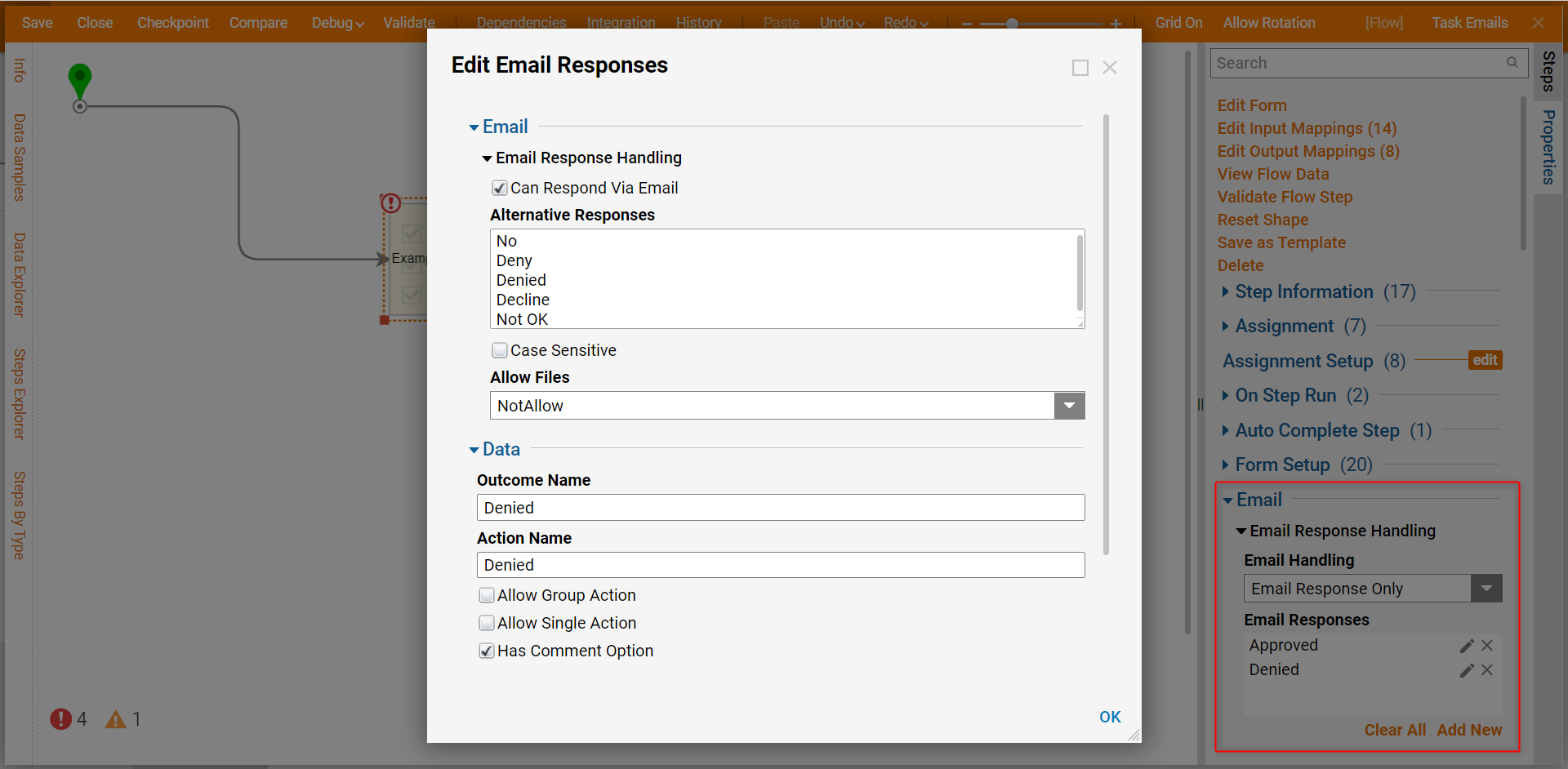
- The email response options are listed in the Handle via Email section of the Form properties.
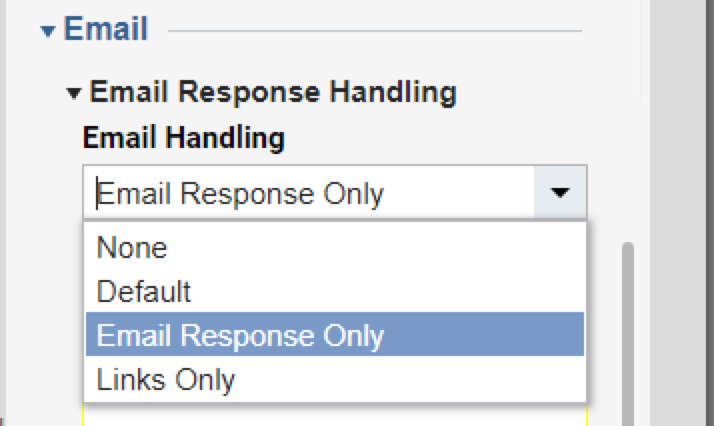
A brief description of what each of these options will do:
| None | This option does not handle email responses so users must respond to their assignment by opening the form directly. |
| Email Response | To respond via email, users will need to send a reply email with specified text between two tags in the email body. |
| Links | To respond via email, users will need to click the response links that are provided in their assignment email. |
| Default | Allows the responses of either or both Email Response and Links. |
Email Response
When you select this option, you will see two subsections appear: Email to Suggest Handling, and Email When Response Does Not Match.
- First, configure the Email to Suggest Handling email. This email will be sent to the user when the Assignment is made and should provide them with instructions on which responses are allowed.
- After describing what reply options are allowed, include the [InlineResponse] variable and the [ResponseID]. The [InlineResponse] variable will cause the following two special lines to appear in the email:
--- Reply Below Here ---
--- Reply Above Here --- - The [ResponseID] variable will add a unique code to the email so that the response job knows which Flow this email is in response to.
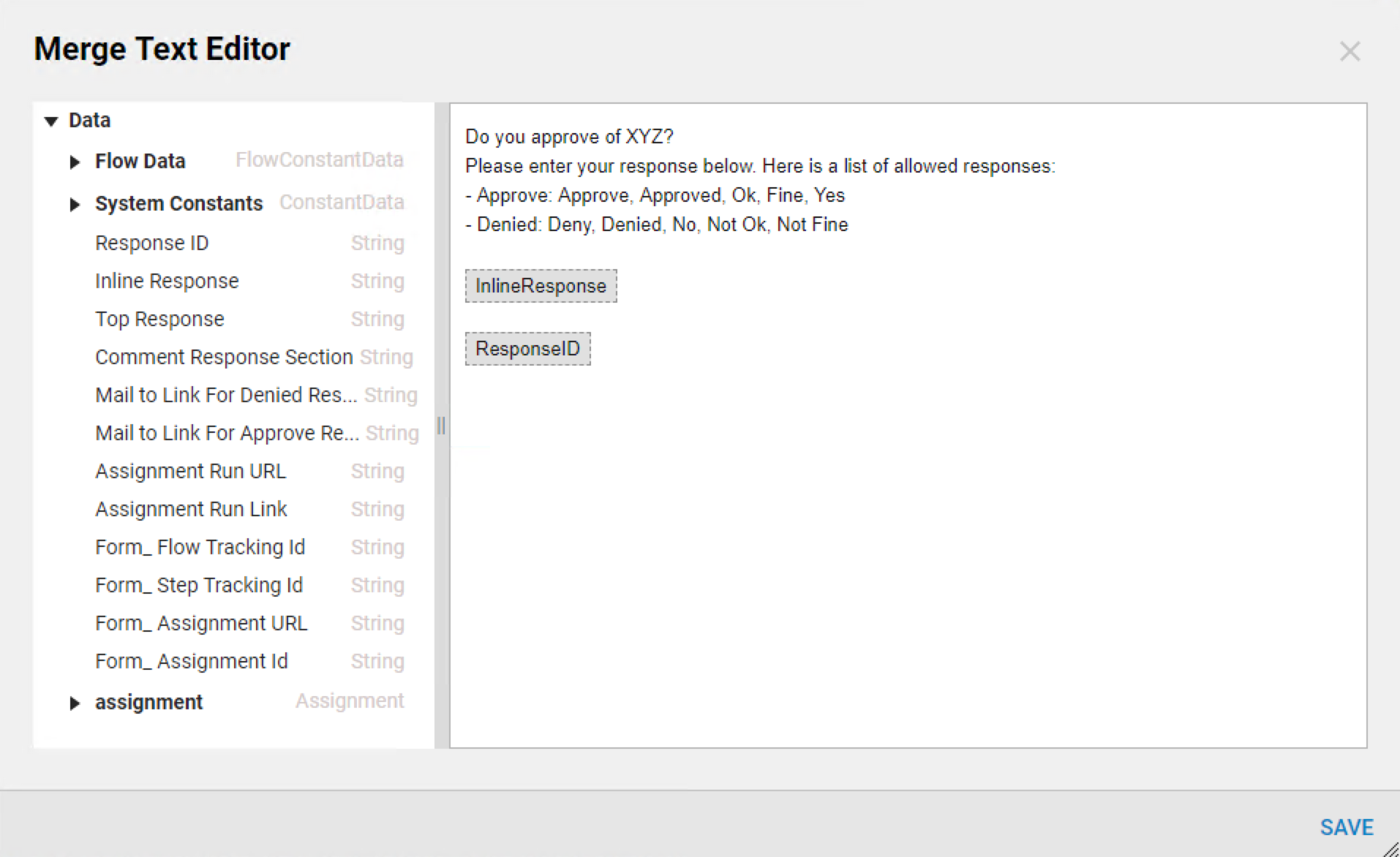
- When this Form is assigned, the assignee will receive the email configured above and will be able to respond in line to that email using one of the approved responses.
- In case a user replies with a response that is not handled (i.e. "Sure that sounds fine"), there needs to be an email that notifies them of an invalid response.
- This can be done in the Email When Response Does Not Match email.
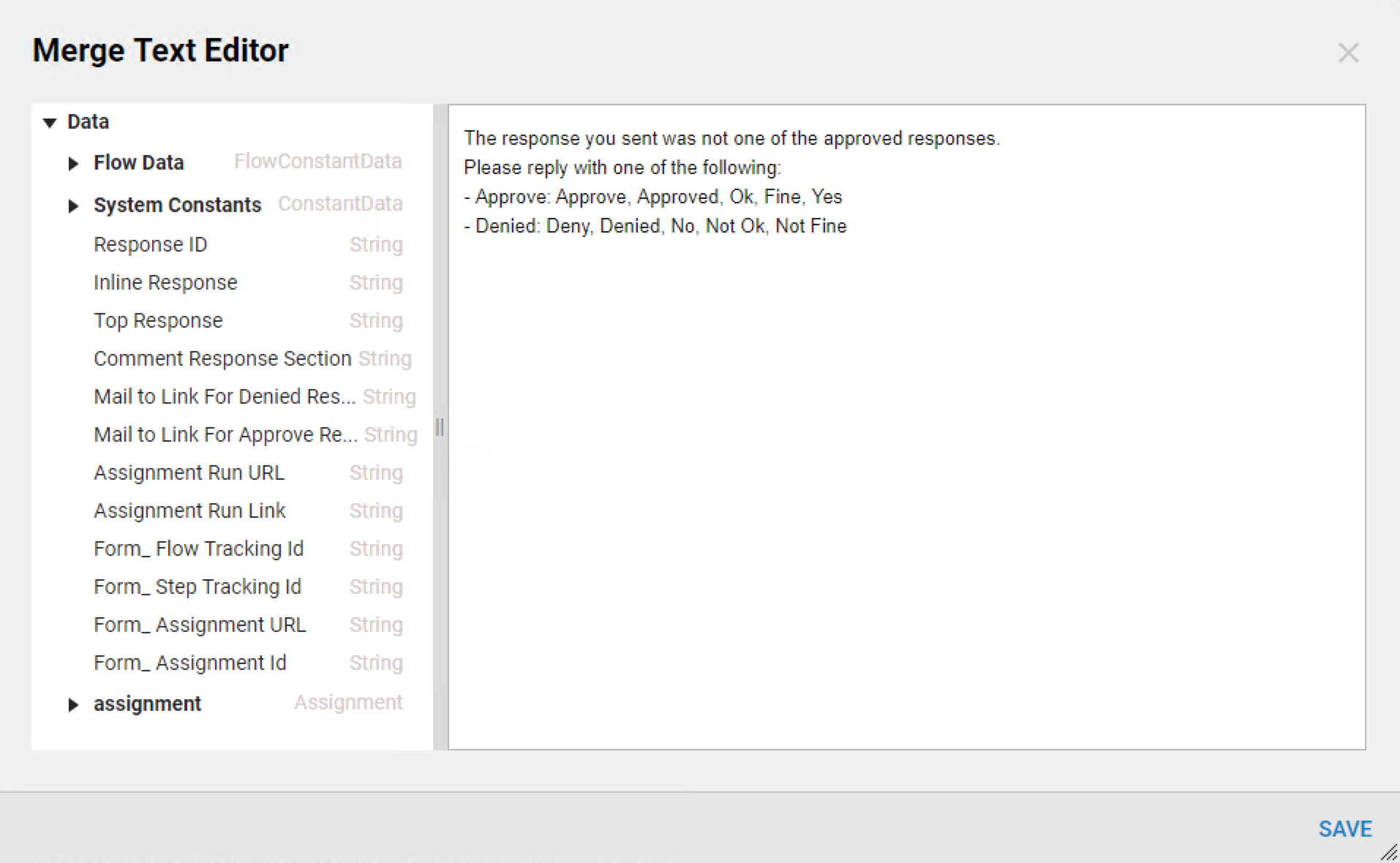
Links
- The Links option for responses allows the inclusion of links that the user can click on to provide their response. Each of the paths configured above in the Outcomes > Action Based Outcomes section will show up as a possible link to choose from.
- Since unique links will be used to provide the response, a [ResponseID] field is not necessary to include in the email body. An Email When Response Does Not Matchemail does not need to be configured.
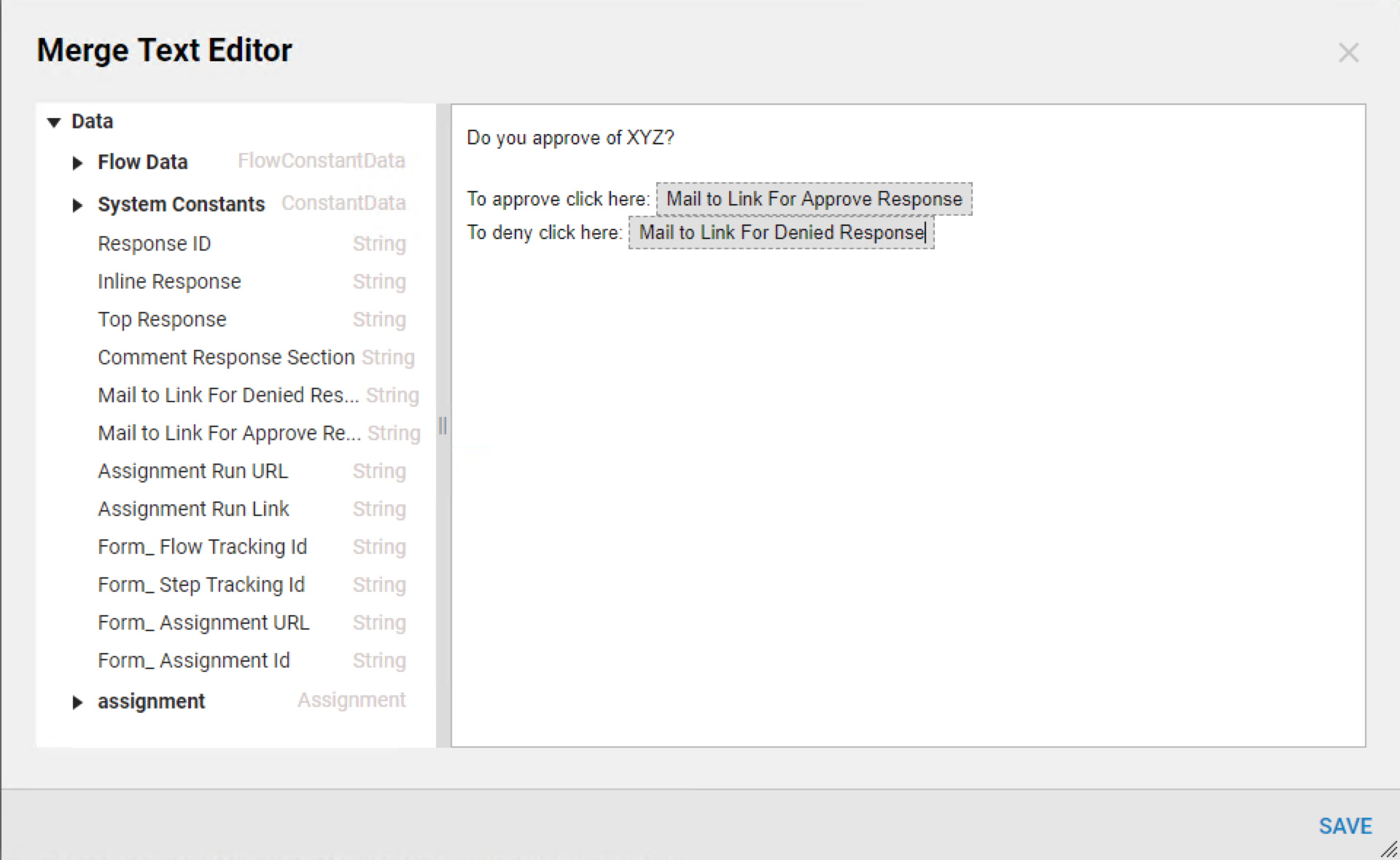
- The user will receive the email above and can provide their response by clicking one of the two links provided.
Default
- This option is a combination of the above two options. When using this response type, an email can be built with both links and inline responses.
